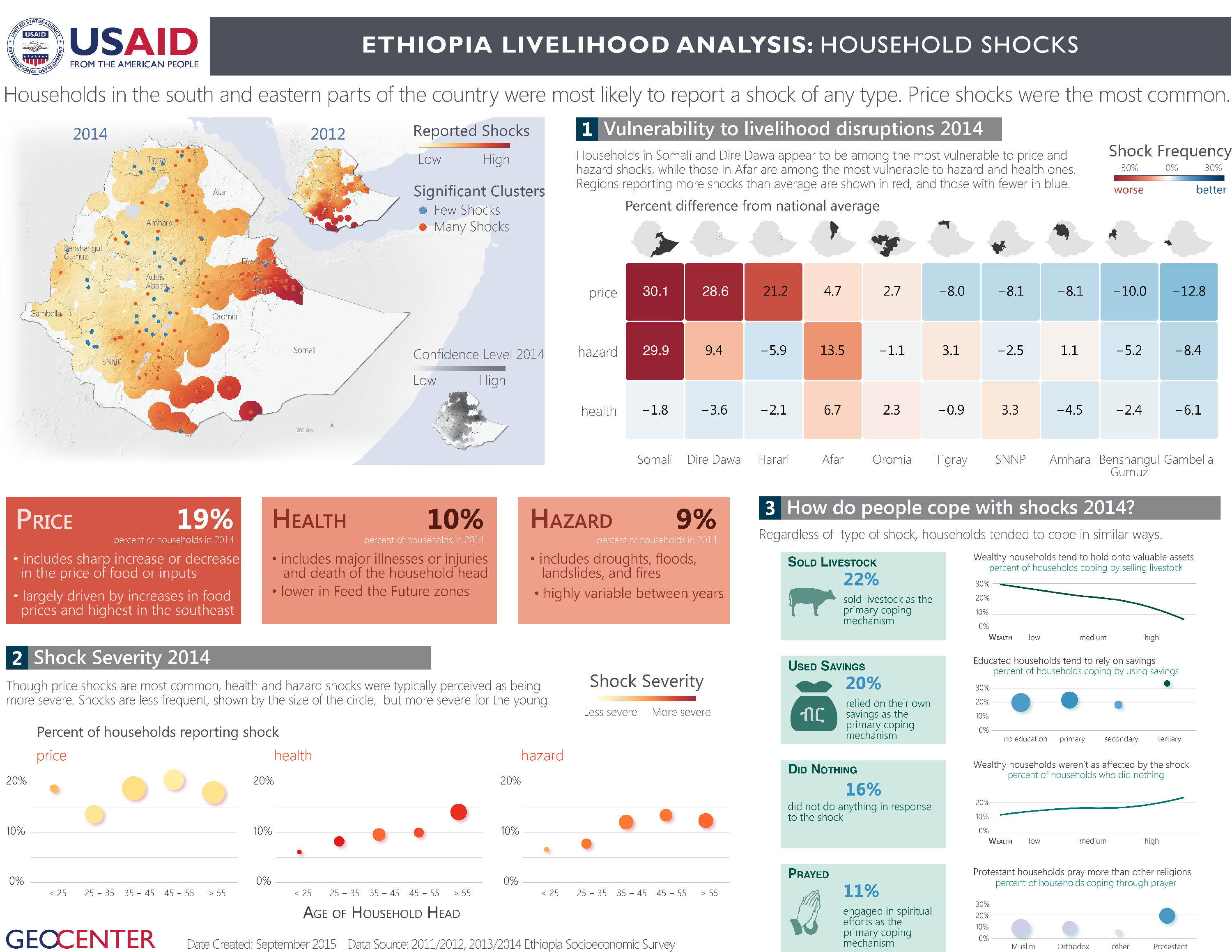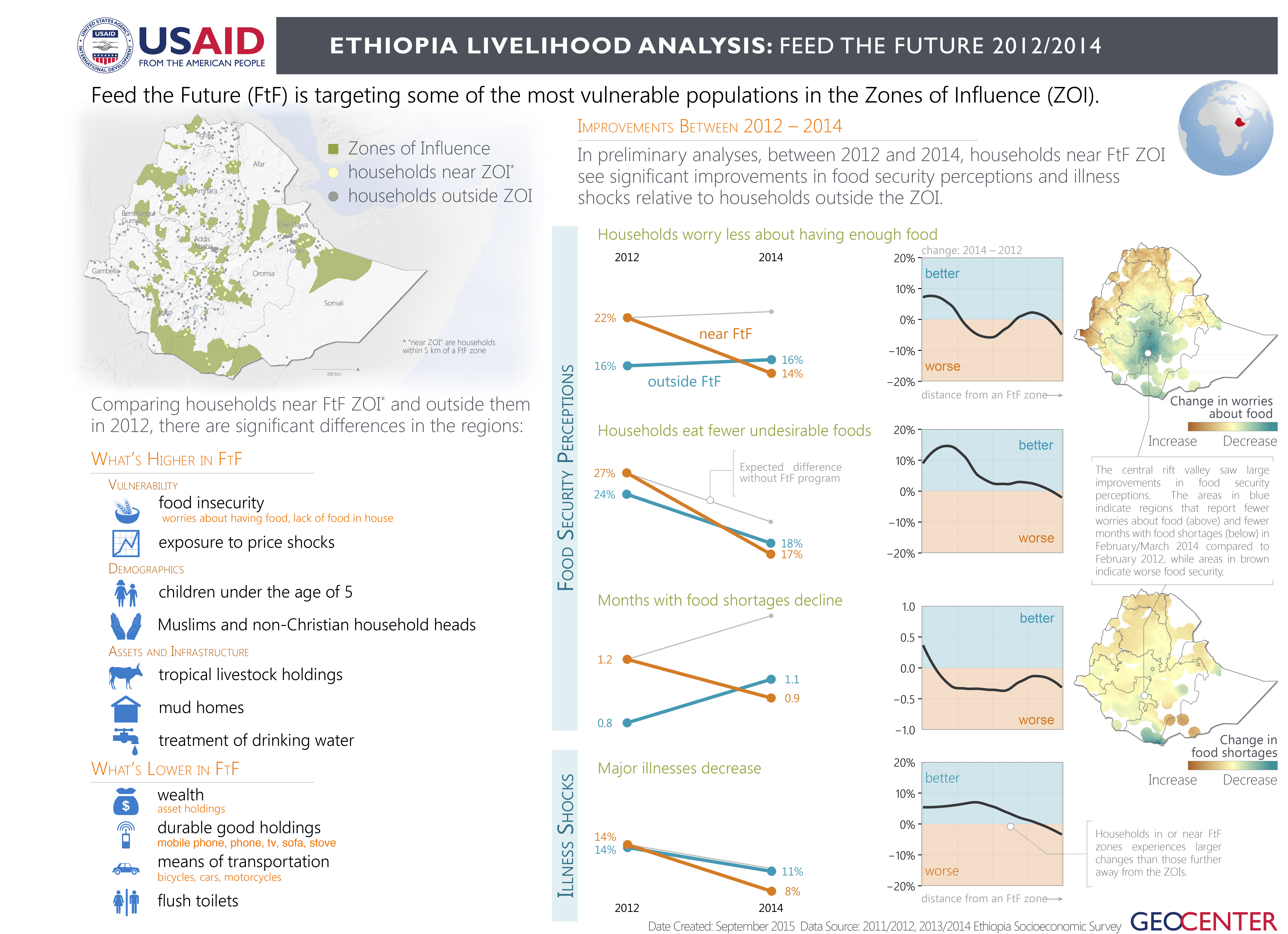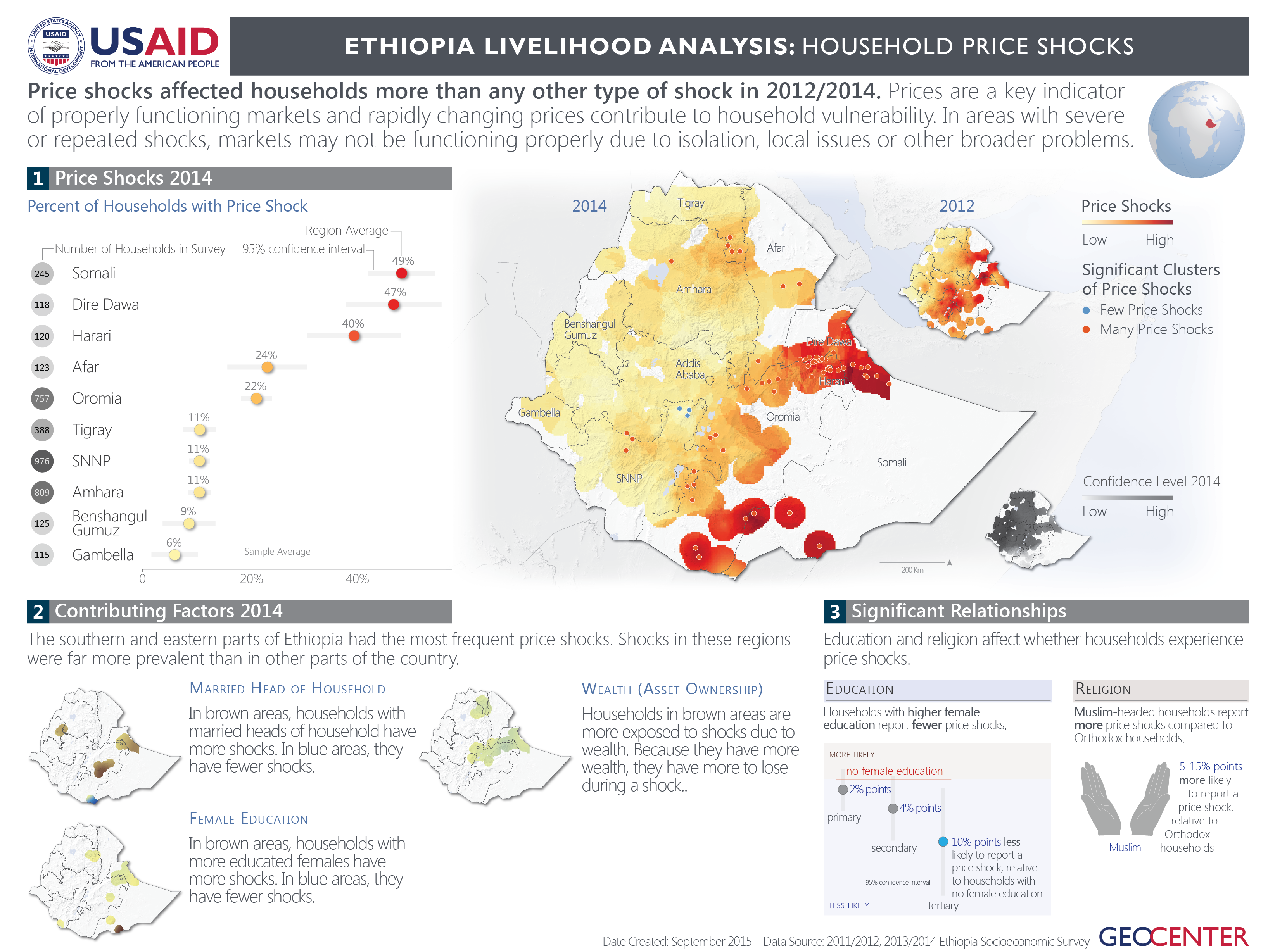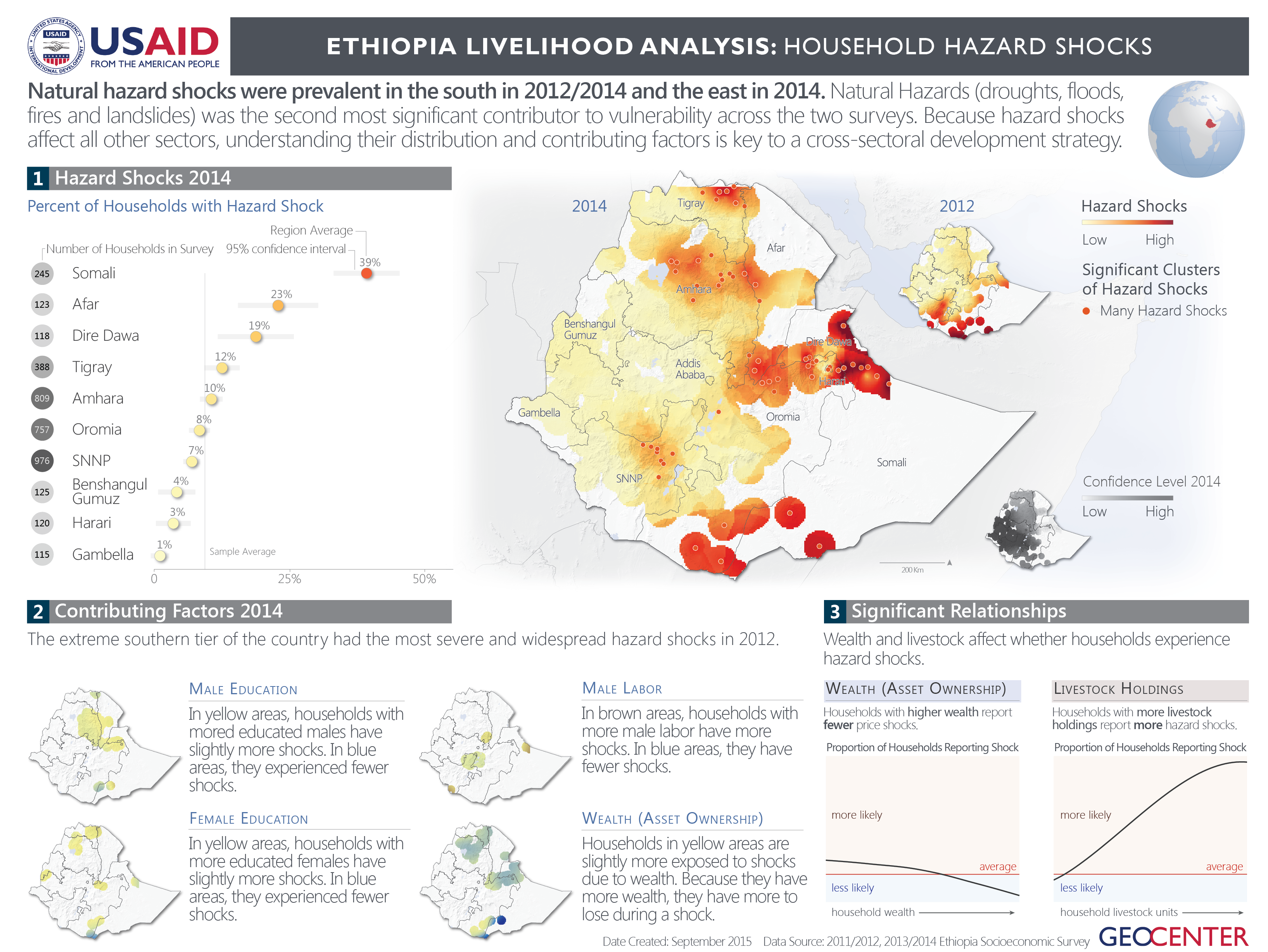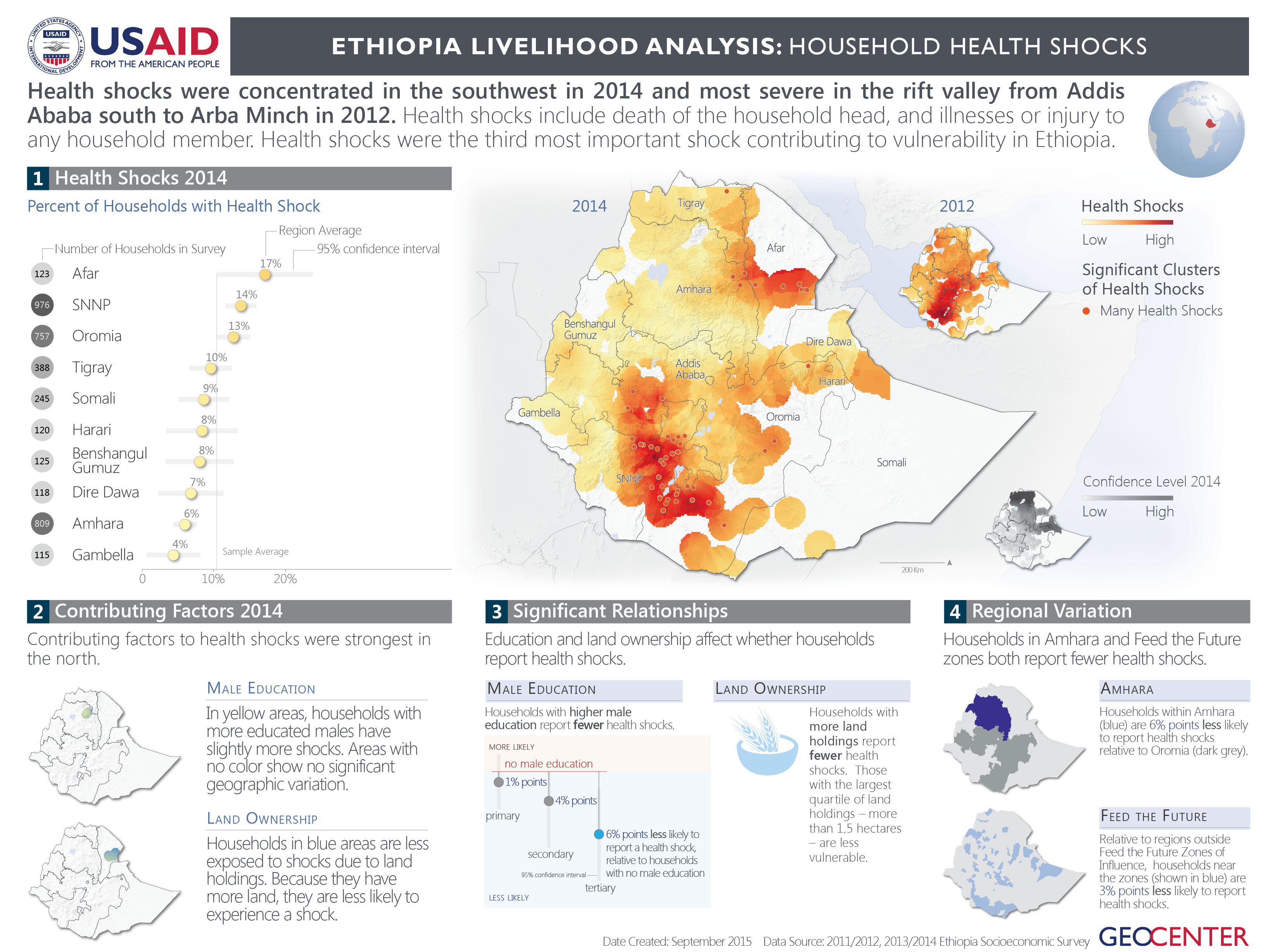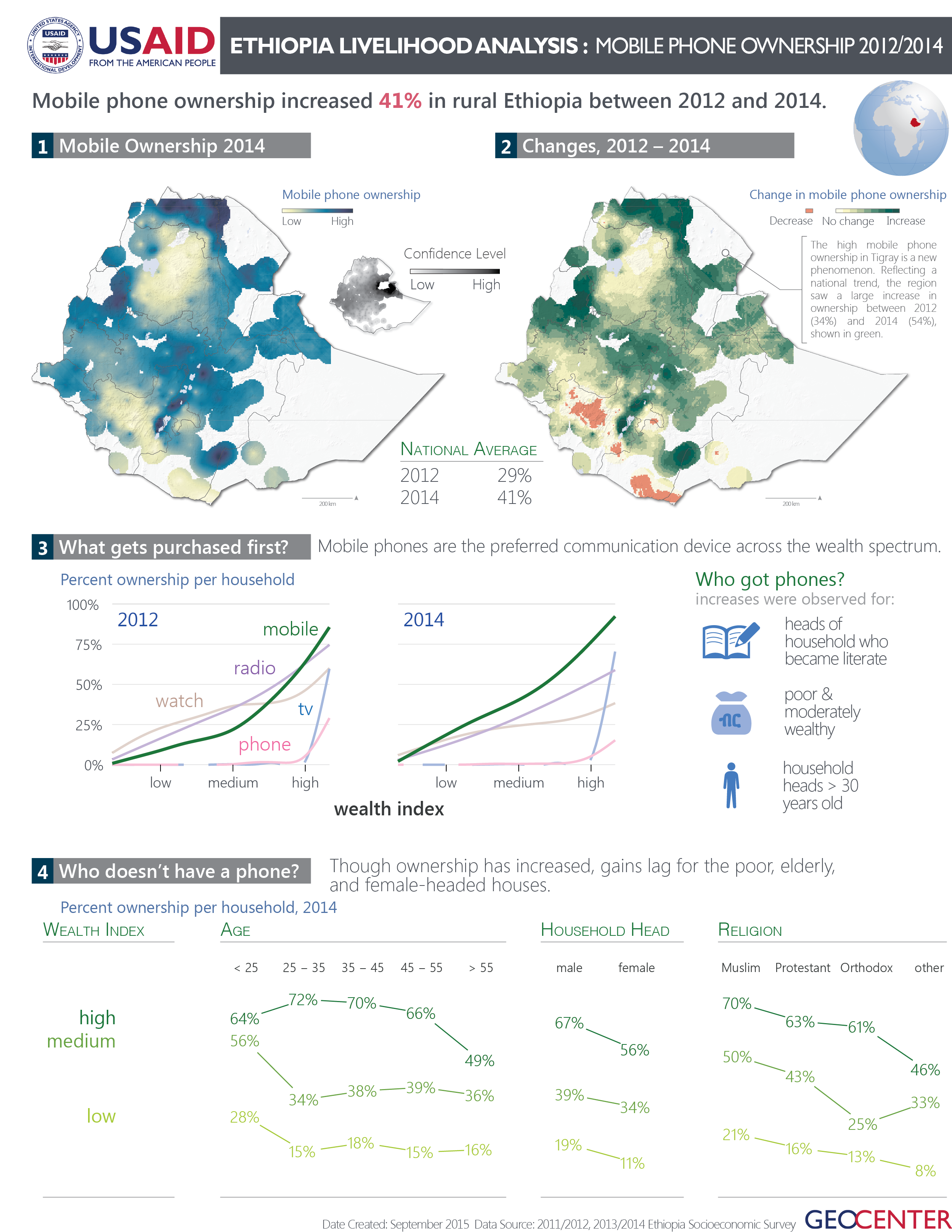Ethiopia
with Tim Essam, Patrick Gault, Doug Johnson, Brent McCusker, Jamison ConleyBackground:
Ethiopians periodically experience disruptions to their livelihoods. But what factors drive whether a household is vulnerable to unexpected shocks? Where are people more vulnerable than others? What are the trends over time? And, most importantly, how do investments in international development influence these factors?
Solution:
Working with data scientists and geographers, we cleaned, processed, and analyzed household-level survey data in three distinct areas: household reports of unexpected shocks (whether from food price changes, natural hazards, or health problems); nutrition and malnutrition; and changes in mobile phone ownership. In addition to doing basic characterization of who is affected, where they are affected, and how the trends have changed over time, we used regression analysis to try to understand what factors contribute to whether a household is vulnerable. Looking at the intersection of these topics, we also investigated whether one program was beginning to influence them using quasi-experimental methodology. This information is now being used by policy makers and international development professionals to inform where to invest funding.
Data Sources:
World Bank Living Standards Measurement Studies 2012 - 2014 Feed the Future Ethiopia
